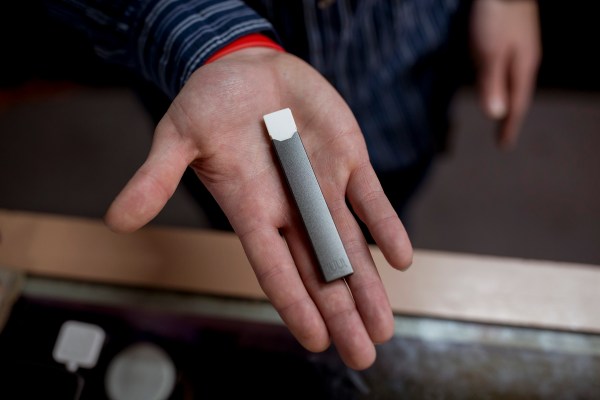
The Department of Health and Human Services and the Food and Drug Administration are readying tough new requirements on e-cigarettes — including a potential ban on flavorings for vaping products.
The FDA compliance policy would mean that all non-tobacco flavored e-cigarettes would have to be cleared by the FDA before they could be sold. The regulations could effectively remove flavored e-cigarette products from the market until they go through the testing required for FDA approval.
In August 2016, e-cigarette companies were required to file premarket tobacco product applications with the FDA over a two-year period. Those companies whose products have not received FDA approval are now considered to be marketed illegally, according to the HHS statement.
“The Trump Administration is making it clear that we intend to clear the market of flavored e-cigarettes to reverse the deeply concerning epidemic of youth e-cigarette use that is impacting children, families, schools and communities,” said Health and Human Services Secretary Alex Azar, in a statement. “We will not stand idly by as these products become an on-ramp to combustible cigarettes or nicotine addiction for a generation of youth.”
Over the past year, the e-cigarette industry has faced a steady stream of criticism related to the health effects of vaping and the ways in which companies marketed their products to minors.
A new version of the National Youth Tobacco Survey shows the continued rise in rates of youth e-cigarette use, especially through non-tobacco flavors, according to the Department of Health and Human Services. More than 25% of high school students were e-cigarette users in 2019, and the bulk of those kids cited fruit and mint flavors as their pods of choice.
Earlier in September, the Centers for Disease Control issued a warning against vaping as several deadly instances of lung-related illnesses cropped up among vape users (although no solid link between the lung condition and vaping has been identified). As we reported at the time:
The first death was reported in late August in Indiana, but other suspected cases have turned fatal in Illinois, Minnesota, California and Oregon — as reported by The Washington Post, though the CDC said three are confirmed and one is under investigation. The number of reported cases has skyrocketed, though this is likely a consequence of better information coming from state health authorities and hospitals, rather than a sudden epidemic.
The government’s mobilization efforts come just one day after former New York City mayor and billionaire philanthropist Mike Bloomberg announced a $160 million effort to combat youth vaping.
Blomberg actually called out the federal government in the announcement, saying:
The federal government has the responsibility to protect children from harm, but it has failed – so the rest of us are taking action. I look forward to partnering with advocates in cities and states across the country on legislative actions that protect our kids’ health. The decline in youth smoking is one of the great health victories of this century, and we can’t allow tobacco companies to reverse that progress.



